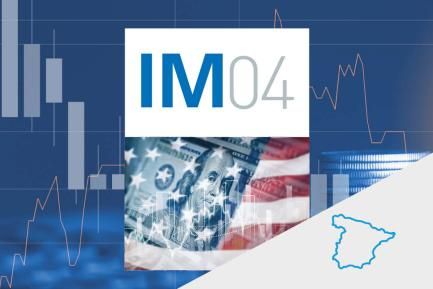An uncertain outlook for a 2022 affected by inflationary pressures
The outbreak of war in Ukraine has overshadowed the positive outlook we were forecasting for the Spanish economy in 2022. While, at the end of last year, some factors had already appeared on the scene that hindered the economic recovery, the armed conflict in Ukraine has become the main focus of attention and the major conditioning factor for short-term economic developments.
April 12th, 2022

- The outbreak of war in Ukraine has overshadowed the positive outlook we were forecasting for the Spanish economy in 2022. While, at the end of last year, some factors had already appeared on the scene that hindered the economic recovery, such as the spread of the Omicron variant, disruptions in global supply chains and inflationary pressures, especially from energy prices, the armed conflict in Ukraine has become the main focus of attention and the major conditioning factor for short-term economic developments. It is still too early to gauge the scope and impact of the conflict on Spain’s economy and its agrifood sector in particular but the principal channel of influence is undoubtedly the rise in energy costs.
- In this case, the Spanish would say that it’s «raining on wet ground»; in other words, it has merely added to the existing problems. In 2021, the agrifood sector’s production capacity was under heavy pressure from rising production costs (energy, fertilisers and feed), an aspect linked to the more global bottlenecks and inflationary pressures mentioned above. The conflict in Ukraine represents another shock for the energy sector, with global value chains taking even longer to get back to normal.
- The impact via the export channel will be limited, since the relative weight of the Russian market had already been drastically reduced since 2014 by the «Russian veto» on imports of European agricultural products (agrifood exports to Russia and Ukraine accounted for barely 0.4% and 0.3% of the total in 2021, respectively). However, the sector will be directly affected by the sharp rise in the price of certain inputs from the «breadbasket of Europe». In particular, 27% of sunflower oil imports and 62% of corn come from Ukraine, while Russia is a major supplier of mineral fertilisers. In addition, the war is pushing up the price of agricultural raw materials, which will also have a significant impact on the agrifood sector.
- In the medium term, expectations are high regarding the Next Generation EU (NGEU) funds, which should provide a boost for investment in innovation and digital transformation, helping to consolidate the high degree of international competitiveness enjoyed by Spain’s agrifood sector. Proof of this is the excellent figure for agrifood exports in 2021 which, with an increase of 11.2%, broke a new record and reached 59 billion euros.
- In terms of demand, food consumption patterns are expected to get back to normal, both within and outside the home, as the health situation normalises. This is reflected in CaixaBank’s internal data on card payments at point-of-sale (POS) terminals: Spanish spending in supermarkets remains high and domestic expenditure on hospitality is already above its pre-crisis level. However, there is some concern that persistently higher food prices will eventually erode consumer purchasing power and real consumption. On the other hand, we expect the recovery in international tourism to support foreign expenditure on hospitality, a segment that is still significantly below its pre-crisis level.
- This winter’s drought has highlighted one of the most important challenges facing the sector: improving how water resources are used given their more limited availability, an aspect we examine in detail in the second article of this Report. Climate change demands that a huge effort be made to adapt Spanish irrigation systems to the new circumstances and, in this respect, the NGEU funds invested will play a vital role in modernising irrigation, with the aim of promoting water savings and energy efficiency.
- In the last article of this Report we look at the olive oil industry in depth, a sector with a deeply-rooted tradition in our country and of which we are a major global producer and exporter (Spain produces 46% of the world’s olive oil). The industry should not belittle efforts to differentiate and enhance the value of a product that is increasingly in demand thanks to its quality and excellent properties.



